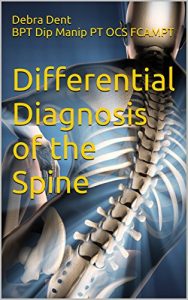A 27-year-old attends your clinic with complaints of a near constant 24/7 type headache that he has had for two months. This headache is widespread and does not seem to have a specific generator for this pain. It doesn’t seem to change with position, time of day, activity or whether he is upright or supine or sitting. He denies the loss of sensation. It does not affect his work other than he has a constant 24/7 type headache which is steadily getting more intense over the past three weeks. He denied systemic changes of fever, stiff neck or malaise.
On examination:
Posture is WNL
Gait is WNL
Rom of his Cervical and thoracic spines are WNL.
ROM neither increases nor decreases his headache.
ROM of his UE is WNL
Key muscles or myotomes are 5/5 for his Cervical region.
On further neurological testing, there is no loss in dermatomal sensation but his slump test causes sharp radiation of pain from his mid-thoracic region outward bilaterally and his plantar response is consistently positive.
You send him back to his family Physician. This Physician has him return to you for treatment. You proceed to retest him, have your colleague retest him. He continues to be consistent in his symptoms and objective findings.
Take the Quiz
This was an actual patient of mine. The Physician did not have a problem with the patient being referred back to him a second time and appreciated my vigilance in searching for the correct diagnosis of this patient. He had an MRI and found to have a 2 cm cyst within the spinal canal. He went on to have the cyst surgically removed. The cyst was small at the time and he was not having any prevalent upper motor neuron issue such as gait, ataxia or multisegmental weakness or sensory changes. Most of his tests were negative with the exception of the (+) plantar response, the (+) slump test, and that constant unrelenting headache. With this patient, the cyst returned and he required a final but successful removal of the cyst in a second surgery. I always do a plantar response on every patient I have, you might be surprised what you find. If there is a positive finding, you need to correlate it with other findings and symptoms and if they have had a previous history of some type of upper motor neuron lesion.
Idiopathic Intradural Arachnoid cysts are rare. When they become symptomatic they can often cause gait issues such as ataxia, paraparesis or quadriparesis and neuropathic pain. Sometimes these cysts can extend 2-4 vertebral lengths. Often these cysts can be cystic neoplastic lesions, acquired cysts after trauma, inflammation after meningitis causing adhesions or parasitic lesions. Idiopathic intradural arachnoid cysts are the most prevalent of CSF type cysts to actually cause spinal cord compression.
MRI is the gold standard for diagnosis. Treatment depends on the size and length of the cyst, the point of compression and the communication of the cyst with the arachnoid space. If the cyst is small and not connected to the arachnoid space, an aspiration under MRI guidance can be attempted. If large and extensive, surgical excision of the cyst would be attempted. Generally, reoccurrence is low with good to excellent outcomes.
https://www.ncbi.nlm.nih.gov/pmc/articles/PMC2899629/
.Differential Diagnosis of the Spine is available on Amazon in soft cover and kindle editions


